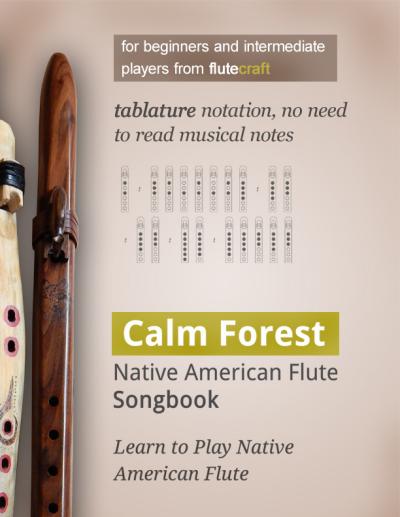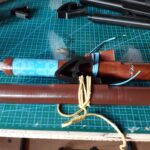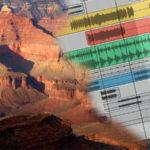Mindfulness is a topic that gained popularity in recent years. To no surprise, it’s a wonderful practice that helps countless people find inner peace in the world of today. Mindfulness is not religious, nor spiritual, but psychological (emotional). Sure, you can add religious or spiritual flavor to your practice, but you don’t have to. Thanks to this, mindfulness is a great practice for people who are neither religious nor spiritual, but still want a practice to achieve inner peace.
Some people wonder how to mix Native American flutes and mindfulness together. In this article, I provide the answer.
- Let’s make something very clear at the very beginning – practicing mindfulness requires no real investment. Sometimes it’s worth to take a class or buy a book, but you don’t need to buy expensive candles, apps, essential oils, incenses, and you don’t need to spend 20 thousand dollars on “the only class that will really teach you mindfulness” that you see being advertised on the internet. Mindfulness and self-improvement today is a business like any other. There are countless products – some are good, some are bad; some are honest, some are a scam. Be careful when dealing with this kind of things.
Disclaimer: I have learned about mindfulness practice many years ago, when I was studying Buddhism. For this reason, I’m quite skeptical about any kind of mindfulness and/or meditation products.
What is Mindfulness?
What is mindfulness? Basically, it is a practice of being mindful – noticing things that are happening and thoughts that are occurring, yet doing so without reacting to them emotionally. For example, you may be washing the dishes: instead of worrying you have to wash the dishes, or feeling any kind of negative emotions towards this activity (or having your mind bombarded by other daily worries), you simply become aware of the fact you’re washing dishes (you are “here and now“). Or you have experience unpleasant thoughts: instead of worrying about this, or trying to get rid of these thoughts, you simple observe them, you let them be, and you wait for them to go away on their own.
- Here’s the only product recommendation in this article ;). For those interested in learning how to practice mindfulness, I recommend Shamash Alidina’s book, Mindfulness for Dummies (aff). It’s a simple to understand guide for beginners and it offers very grounded advices and techniques that, in case you worry, have nothing to do with New Age. It’s based more on psychology and science. I love it for this very reason – a simple, affordable book that tells you mindfulness is simple and requires no additional shopping :).
There are many techniques a person can use to develop hers or his mindfulness skills. The basic practice is this: you sit down and just allow things to be. You notice events in your surroundings, sounds, objects; and you also notice thoughts in your own mind – whatever they may be. At the same time, you just breathe. Slow and gentle, yet natural breath in, breath out. Whenever your mind wonders and tries to focus on:
- A thought.
- An emotion.
- An object.
- A sound.
- Etc.
You just notice this fact, and you return your focus to your breathing. Without judging yourself, without worrying. Your mind will wonder, this is normal. The goal of this basic mindfulness practice is to accept this fact and gently, in nonjudgemental way, focus on your breathing once again. You can practice this between one minute and an hour or even longer. I really recommend Mindfulness for Dummies, since it’s a great explanation of both mindfulness, and various techniques you can use.
Shakuhachi and Blowing Zen
In many ways, mindfulness is often associated with Buddhism, or to be more specific, one of its school, Zen. In Zen, there is a practice of Suizen – “Blowing Zen”. It is a practice of meditation using a shakuhachi, a Japanese bamboo flute. It is by no means an easy practice. In in, the player focuses on their breath to shape a sound – this is a general description. I just want to mention it – since I do not play a shakuhachi (yet), I don’t really have anything to say about the practice of Suizen – there aren’t too many books or scientific articles about it, but if you ever have an opportunity to learn the art of Suizen, go ahead.
Mindfulness and Native American Flute
Assuming that the basic mindfulness practice is based on acceptance, noticing when your mind wonders, and gently returning to your breathing practice, how do you mix this with you playing Native American flutes? Well, when you play a NAF, you:
- Already work with your breathing – you need to blow the air into the mouthpiece, and you need to take air in to keep playing (and, well, to stay alive).
- Already have something to focus upon – either the melody, or the feelings you translate into a melody if you play from your heart.
Thus, to become a more mindful flute player, you need to work with your breath. You should make it smoother, gentler. Breath in, play the flute, breathe out, then breath in again. Shape your melodies in such way that your breath is gentle, and natural, and you’re not forcing yourself or straining yourself. This is the breathing part.
What about your focus? Well, as you play the melody, either composed by yourself or someone else (like the melodies from my Calm Forest Native American flute songbook), or you improvise on Native American flute, and you play from your heart, you may experience the same thing I mentioned earlier: your mind may wonder. You may be distracted by outside objects, events or sounds. In this case, being a mindful player simply requires you to focus on breathing and playing. Do this gently and do not judge yourself.
But playing a NAF, whether from the heart or from the notes, may also cause you to experience various emotions. Mindfulness practice – whether it comes in form of meditation, or psychological technique, or even flute playing – may cause you experience long forgotten emotions, or even hidden emotions. For this reason:
- You need to be aware of this fact – this way you won’t be surprised when you feel these emotions.
- If the emotions become too much for you, it’s perfectly fine to seek help from a professional therapist.
I am not a therapist, so I do not feel comfortable with telling you what you should do with these emotions, or feelings, or even memories that can come to you. I’m simply telling you this may happen and if it’s too much for you, and you don’t know how to deal with them, please seek professional help.
That said, mindfulness states that once the emotions or feelings come, you should gently focus on your breathing again. Notice the emotions, observe them without judging, without reacting, and focus on your breathing. In case of Native American flute and mindfulness, you do so while gently playing the flute.
Native American Flute and Mindfulness in Practice
There are many great books and other resources on mindfulness in general – most of them will be based on this basic concept: focus on your breathing, observe the thoughts and events without reacting to them and without judging yourself. In case of Native American flute, you simply add the “playing” part to this basic practice.
Rule: No Recordings
The practices here is based on you actually playing the instrument and focusing on your breathing and the sound you’re shaping. Thus, recordings of Native American style flute will not work here. Native American style flute music is beautiful and recordings marketed as “meditation music” can be very soothing, very relaxing, but due to their nature (being merely recordings), they lack things that make mindful flute playing an actual mindfulness practice. So while it’s perfectly fine to listen to meditative NAF music, the recordings themselves won’t be useful for actual mindfulness practice.
Why Use Native American Flute for Mindfulness
Mindfulness can be practiced in many different ways. A flute is merely a tool to help you focus. I chose this tool, because at one point of my life, I had trouble focusing solely on my own breathing. I needed something to focus upon, and since I already played Native American style flutes and I knew that Zen uses shakuhachi flutes for meditation practice, I decided to try using a NAF for similar practice.
Some people may need such a tool to help them focus. Especially when you’re just starting out your mindfulness practice, it may be difficult for you to just sit down, not moving at all, and focusing on your breathing.
And some people may simply believe that practicing mindfulness while playing a Native American style flute is a great, enjoyable idea! And that’s true, as well.
Choosing the Flute
What kind of flute do you need? Actually, this is an interesting question, because while this article focuses on Native American style flutes, the basic idea behind the practices can be applied to any kind of flute – whether it’s a NAF, shakuhachi, quena, recorder or modern concert flute. So if you’re reading this in hope you can learn about mindfulness and your Ney flute or tin whistle, don’t worry, as long as you enjoy the sound of your instrument, you’ll be fine.
The Key of the Flute
But let’s go back to Native American style flutes. The type of wood your flute is made of, and the key of the flute (A, G, F# etc.) doesn’t matter. All I ask you is to be comfortable with the sound of your flute. This is very important – you have to enjoy the sound of your instrument. Personally, I do not like the higher tones, such as G5, made by very small flutes. So while I do play these higher sounding flutes, I would not use them for mindfulness practice.
On the other hand, some people associate low keys with meditative states, so they tend to think they should play anything like D4, or even lower, bass flutes. If you do like the sound of low, bass flute, that’s perfectly fine. But at the same time, playing a bass flute is not a requirement for practicing mindfulness with a flute.
Personally, for mindfulness practice, I usually choose any key of the following: A, G, F#, D – all in their middle range (4th octave). These are the most popular Native American style flute models and they are offered by almost every flute maker.
The general rule is this: if you enjoy the sound of the flute, if you feel comfortable with this sound, if it sounds soothing to you, then this particular flute will be perfect for your mindfulness practice.
It’s OK to have only one flute for mindfulness practice, and it’s also OK to have multiple flutes and use them whenever you feel like it.
The Wood the Flute is Made of
The materials the flute is made of are not important, really. But, I will state that beginners should choose a flute they physically and visually enjoy. If you constantly think, “Oh my, I don’t like the color of this flute” or “This knot thing is not good looking”, this may distract you from your mindfulness practice at first. On the other hand, letting go of these worries may be a very interesting mindfulness practice ;).
Such “troubling physical elements” – color, grain, knots – are a perfect meditative tools. You can actually practice mindfulness by learning how to simply observe irritating physical features of your instrument and this would be a great way to practice. But I am a strong believer in the following philosophy of mindfulness: start small, start simple, and with as few distractions as possible. Build up your practice from there.
440 vs 432
I believe it’s important to discuss the matter of tuning. In recent years a number of flutes tuned to A=432 Hz has grown a lot. You can actually buy Native American style flutes tuned to concert pitch, A=440 Hz, and you can also buy flutes tuned to A=432 Hz. This second type of tuning is often called “healing pitch” and New Age websites and books like to say it’s a healing frequency. Somewhere around this you can also read conspiracy theories saying that concert pitch of A=440 is a way to manipulate our minds by the government.
I’m a science guy. From a scientific perspective, there is no difference in tuning between 440 and 432 Hz. The frequencies of each note are slightly different, but that’s it. There are no scientific proofs for 440 being bad for you, or 432 being good for you (or the other way around). From a scientific point of view, there is no different between choosing a flute tuned to concert pitch, and choosing a flute tuned to A=432 Hz.
The only difference is that with a 432 Hz flute, you won’t be able to play together with other musicians who have their instruments tuned to concert pitch. So if you wonder which tuning is better for mindfulness practice, my science based opinion is that there is no difference.
Rule: No Artificial Reverb
This means what we focus upon here is the pure sound of Native American style flute without any additional effects such as reverb. I’m not against natural reverb, like the one in the mountains, or in a cave, or your bathroom – if you play in a place with natural reverberation, that’s great. But for this mindfulness practice, do not use artificial reverbs provided by electronic tools or digital audio workstation software.
Practice
Basically, the goal of mindfully playing Native American style flute is to focus on all the nuances of your breath and the sound you’re making and shaping through your breathing. It’s either a single note, or a set of notes (a melody), or all the nuances of the “special effects” such as grace notes or thrills. Try exactly this:
- Play a single note – with various speeds; with various strength; with various attacks; focus on every nuance and every detail of the sound you’re making, with and without connection to your breath.
- Play a melody – and do this just like earlier, with various strength, attacks and so on, focusing on every detail.
- Play a decorative element – such as grace note, and focus on every single detail of the sound the flute is making.
That’s it – incorporate focus on your breath and every detail of the sound of the flute into your playing. Whenever you get distracted by worries, thoughts or things in your environment, return your focus on the breath and details of the sounds.
Source of the main photo: https://pixabay.com/photos/harmony-relax-rock-moqui-stone-1229880/
Don't forget to become a fan on Facebook and subscribe to new posts via RSS or via email.











 via EMAIL
via EMAIL